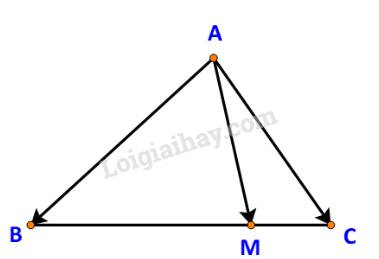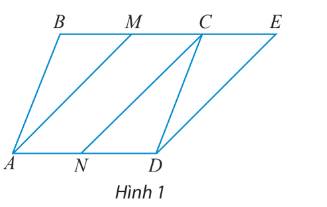Trong hình 4.39, số đo góc BAC cũng được gọi là số đo góc giữa hai vectơ \(\overrightarrow {AB} \) và \(\overrightarrow {AC} \). Hãy tìm số đo các góc giữa \(\overrightarrow {BC} \) và \(\overrightarrow {BD} \), \(\overrightarrow {DA} \) và \(\overrightarrow {DB} \).













